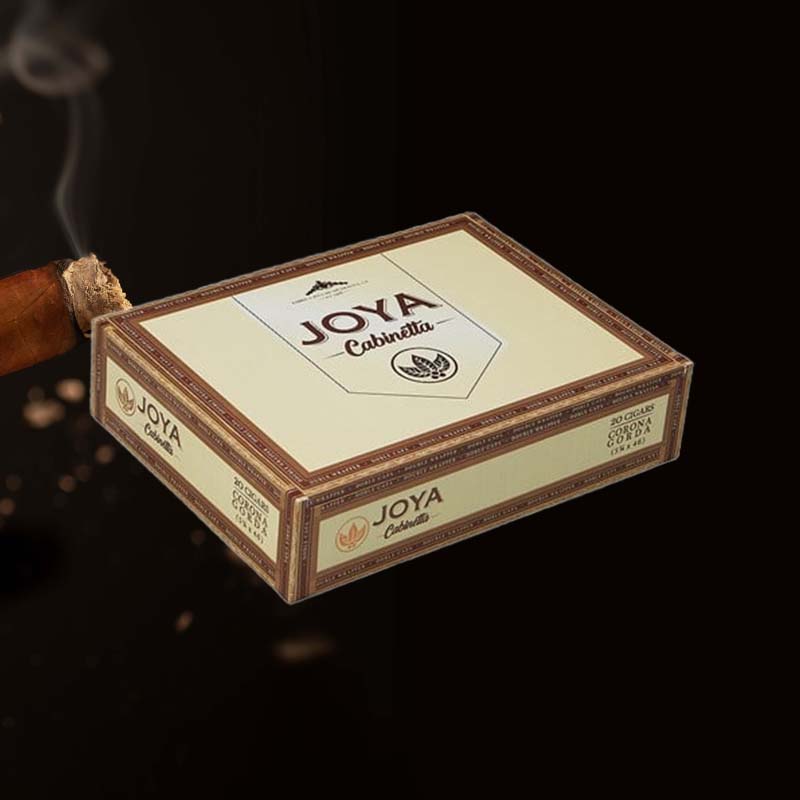So lesen Sie ein Food -Thermometer
Heute sprechen wir darüber, wie man ein Food -Thermometer liest.
Als jemand, der unzählige Wochenenden verbracht hat, zu grillen, Backen, und experimentieren in der Küche, Ich verstehe die Frustration des Servierens von unterkochtem oder verkochtem Essen. Die USA. Zentren für die Kontrolle und Prävention von Krankheiten (CDC) schätzt das 1 In 6 Die Amerikaner werden jedes Jahr an krankhaften Krankheiten krank, Die Verwendung eines Lebensmittel -Thermometers für unseren Gesundheits- und kulinarischen Erfolg von entscheidender Bedeutung. Aus diesem Grund bin ich fest davon überzeugt, ein Lebensmittelthermometer zu verwenden. Es hat nicht nur meine Kocherfahrung verändert, sondern mir auch das Vertrauen gegeben, Essen zu servieren, das sowohl sicher als auch köstlich ist. In diesem Leitfaden, Ich bin hier, um alles zu teilen, was ich über gelernt habe, wie man ein Lebensmittelthermometer effektiv liest.
Wann sollten Sie ein Food -Thermometer verwenden?
Verständnis der Bedeutung genauer Temperaturwerte
In meiner Küche, I use a food thermometer whenever I’m cooking meat, Geflügel, or baking items like bread or cakes. Nach Angaben des USDA, food must reach certain temperatures to kill harmful bacteria; Zum Beispiel, ground meats should reach at least 160°F (71° C) and poultry should be cooked to a minimum of 165°F (74° C). This knowledge not only protects my family from foodborne illnesses but also helps me achieve consistently juicy and flavorful dishes, making it easy to appreciate why using a food thermometer is essential.
What type of food thermometer is best?

Comparative analysis of thermometer types
- Digitale Thermometer: Sie bieten schnelle Lesungen an (Normalerweise im Inneren 5 Sekunden) and precise measurements, making them my top choice. Laut einer Studie, 85% of professional chefs prefer digital thermometers for their accuracy.
- Wählen Sie Thermometer: Slower readings, taking up to 30 Sekunden, but they are durable and often more affordable. Sie sind zuverlässig für Low-Budget-Optionen.
- Infrarot -Thermometer: Am besten für Oberflächentemperaturwerte, Wie Pizza -Steine, Sie können jedoch nicht die inneren Temperaturen messen, Sie für Fleischgerichte weniger nützlich machen.
Nach meiner Erfahrung, Das elegante Design und die schnellen Ergebnisse digitaler Thermometer machen sie am besten für einen Heimkoch wie ich..
Thermometer im Vergleich zu sofortigen Lesen

Vor- und Nachteile jedes Typs
- Thermometer hinterlassen:
- Profis: Überwachung die Temperatur während des gesamten Kochens, Perfekt für Braten; Ich habe sie als besonders nützlich empfunden, wenn sie in den Ferien einen ganzen Truthahn kochen.
- Nachteile: Sie erfordern eine ofensichere Platzierung, Dies kann schwierig sein, wenn Sie nicht aufpassen, es richtig zu positionieren.
- Sofortige Thermometer:
- Profis: Schnelle Ergebnisse, Oft im Inneren 1-2 Sekunden, Erlauben Sie mir, die Temperaturen mehrmals zu überprüfen. Sie sind meine Anlaufstelle zum Grillen.
- Nachteile: Nicht für die kontinuierliche Überwachung; I can’t leave them in the oven while it cooks.
For roasts, I typically use a leave-in thermometer to avoid opening the oven, while I rely on instant-read thermometers for quick checks while grilling outdoors.
How to use a food thermometer

Step-by-step instructions for usage
- Setzen Sie die Sonde in den dicksten Teil des Essens ein, Knochen vermeiden, fett, oder Grolls. Ensure the sensor tip is fully inside the meat.
- Warte um 5-10 Sekunden für die Lesung zu stabilisieren, depending on the thermometer type.
- Read the temperature on the display and compare it to the recommended food safety guidelines.
Following these steps has made me a much more accurate cook; I rarely second-guess myself anymore, and I can finally enjoy my culinary creations without the anxiety of undercooked food.
Correct food thermometer placement
Identifying the best locations for measurement
Im Laufe der Jahre, I’ve learned that the placement of the thermometer probe can greatly affect the reading. Für Fleisch, the thickest part is always the best bet. Zum Beispiel, when measuring chicken, I find that inserting the probe in the breast or thigh yields the most accurate results. Nach USDA -Richtlinien, avoiding bones and fat ensures that the temperature reflects the meat itself rather than the surrounding elements.
Do you need to calibrate a food thermometer?

Understanding the calibration process
Absolut! Calibration is essential to ensure my thermometer provides accurate readings. Industry studies suggest that thermometers can lose accuracy over time, and I often check them before major cooking events. By checking the thermometer against boiling water (should read 212°F or 100°C) or ice water (32° F oder 0 ° C.), Ich kann zuversichtlich in meinen Kochtemperaturen sein.
So überprüfen Sie die Genauigkeit eines Lebensmittelthermometers
Methoden, um sicherzustellen, dass Ihr Thermometer korrekt funktioniert
Zwei zuverlässige Methoden, die ich angewendet habe, sind das Eiswasser- und kochende Wassertest; Sicherstellen, dass mein Thermometer genau ist, bedeutet, dass ich mit Zuversicht kochen kann. Wenn mein Thermometer 32 ° F liest (0° C) in Eiswasser oder 212 ° F. (100° C) in kochendem Wasser, Dann weiß ich, dass es gut ist zu gehen. Wenn nicht, Kalibrierung wird notwendig.
Häufige Fehler bei der Verwendung eines Lebensmittelthermometers

Was zu vermeiden für genaue Lesungen zu vermeiden ist
- Nicht tief genug einfügen; Ich habe gelernt, dass dies zu erheblich geringeren Heizwerken führen kann.
- Messen zu nahe an Knochen oder Fett; Diese Bereiche können die Temperatur um mehrere Grad abwerfen, was zu unsicherem Essen führt.
- Neglecting to clean the thermometer after each use; bacteria can easily transfer from one dish to another.
Avoiding these mistakes has saved me from countless cooking mishaps; by honing my technique, I’ve elevated my culinary skills and improved food safety.
Food safety tips

How proper use of thermometers prevents foodborne illness
By using a food thermometer, I ensure that my meals are cooked to temperatures that kill bacteria, reducing my risk of foodborne illness. gemäß CDC, using a food thermometer could prevent about 50% of foodborne illnesses caused by undercooked meat. Knowing that I am taking all the necessary precautions makes my cooking experience much more enjoyable.
Choosing a food thermometer

Factors to consider for your needs
- Type of food I usually cook (Z.B., roasts vs. Grillen).
- Desired speed of temperature readings; I personally prefer quick-read models for efficient cooking.
- My budget and brand preferences; I’ve learned that spending a little more on quality pays off.
The right thermometer has made my cooking less stressful and more precise. Investing in a good one might seem like an expense, but with proper use, it pays for itself in saved meals.
Calibrating your food thermometer
How and why calibration is crucial
Calibration is crucial because it helps maintain exact readings. I regularly check my thermometer to ensure it still reflects accurate temperatures. Eine Studie zeigte das 76% of home cooks lack the knowledge to calibrate their thermometers, which can lead to serious cooking errors. By sticking to the calibration methods mentioned, I’ve ensured accurate cooking outcomes over time.
The advantage of using digital thermometers

Vorteile der Einführung digitaler Technologie beim Kochen
Digitale Thermometer liefern schnelle Antworten, innerhalb von Sekunden, sie perfekt für ungeduldige Köche wie mich selbst machen! Eine Umfrage zeigt das 90% von professionellen Köchen bevorzugen digitale Thermometer, weil sie weniger anfällig für menschliche Fehler sind. Sie haben normalerweise auch Hintergrundbeleuchtung und leicht zu lesende Schnittstellen, Verbesserung meiner Erfahrung für die Zubereitung von Speisen.
Eiswassermethode zur Überprüfung der Genauigkeit der Thermometer
Detaillierte Schritte für die Eiswassermethode
- Füllen Sie ein Glas mit zerkleinertem Eis und kaltem Wasser, Lass es eine Minute sitzen.
- Setzen Sie die Sonde des Thermometers ins Wasser ein, ohne die Seiten oder den Boden des Glass zu berühren.
- Überprüfen Sie eine Lesung um 32 ° F. (0° C). Wenn es nicht genau liest, Es ist Zeit zu neu zu kalibrieren.
Mit dieser einfachen Methode kann ich sicherstellen, dass mein Thermometer genau liest, Gib mir Seelenfrieden in der Küche.
Kochen Wassermethode zur Überprüfung der Genauigkeit

Anweisungen zur Verwendung der kochenden Wassermethode
- Füllen Sie einen Topf mit Wasser und bringen Sie ihn zum vollen Kochen.
- Setzen Sie das Thermometer in das kochende Wasser ein, ohne den Topf zu berühren.
- Überprüfen Sie eine Messung um 212 ° F. (100° C). Dies sollte mir sagen, ob mein Thermometer ordnungsgemäß funktioniert.
Diese Methode hat mich nie gescheitert, Stellen Sie sicher, dass ich jedes Mal sicher und effektiv koche.
Verständnis der Nahrungsmittel -Garnessemperaturen

Empfohlene Temperaturbereiche für verschiedene Lebensmittel
- Hackfleisch: 160° F (71° C)
- Geflügel: 165° F (74° C)
- Rindfleisch, Schweinefleisch, Lamm: 145° F (63° C)
- Fisch: 145° F (63° C)
Ich halte diese Liste griffbereit, weil es mir hilft, zuversichtlich zu sein, dass jede Mahlzeit perfekt und sicher für alle ist, um es zu genießen. Das Wissen bestimmter Zahlen hat meine Mahlzeit viel zuverlässiger vorbereitet.
Gesamtwartung und Pflege für Lebensmittelthermometer

Best Practices, um Ihr Thermometer in Topform zu halten
- Reinigen Sie die Sonde nach jedem Gebrauch mit heiß, Seifenwasser.
- Speichern Sie das Thermometer in einem Schutzfall, um Schäden zu vermeiden.
- Überprüfen Sie regelmäßig die Kalibrierung; Ich habe eine Erinnerung daran festgelegt, dies alle drei Monate zu tun.
Diese einfachen Schritte zu unternehmen hat die Lebensdauer meines Thermometers erheblich verlängert, Erlaube mir, meine Küche am Punkt zu halten. Ich kann mich für alle meine Kochbedürfnisse darauf verlassen, ohne die Genauigkeit zu verlieren.
FAQ
Wie lesen Sie ein Kochthermometer?

Ein Kochthermometer lesen, Setzen Sie es in den dicksten Teil des Essens vom Knochen weg, Warten Sie ein paar Sekunden, bis es stabilisiert ist, und lesen Sie dann die Temperatur auf der Anzeige oder zum Zifferblatt.
Wie lese ich mein Thermometer??
Wenn Sie Ihr Thermometer lesen, Stellen Sie sicher.
So überprüfen Sie, ob ein Lebensmittelthermometer genau ist?

Genauigkeit überprüfen, Verwenden Sie die Eiswasser- und kochenden Wassermethoden. Jeder sollte nahe 32 ° F bzw. 212 ° F lesen.
Wie nimmt man die Temperatur mit einem Lebensmittelthermometer ein?

Setzen Sie die Sonde des Thermometers in den dicksten Teil der Nahrung ein, Knochen und Fett vermeiden. Warten Sie ein paar Momente, bis die Lesung stabilisiert wird, bevor Sie die Temperatur aufzeichnen.





